-
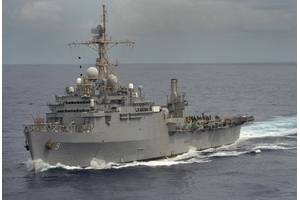
Ex-USS Denver Served Until Sunk
Explosive charges aboard the ship enabled battle damage assessment (BDA) teams to respond to actual damageThe former Austin-class amphibious transport dock USS Denver (LPD 9) was sunk in a blaze of glory as a target ship during the recent Rim of the Pacific (RIMPAC) Exercise 2022. The 9,600-ton, 561-foot Denver, which was commissioned in 1968 and served until being retired in 2014, had been stored with other inactive ships at Pearl Harbor…
-
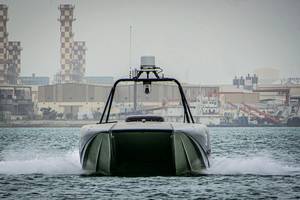
Navy Establishing Unmanned Surface Vessel Fleet for Persistent ISR in Middle East
“We're not tinkering. We're building enhanced maritime domain awareness.”The U.S. Navy’s Task Force 59, based in Bahrain as part of the U.S. Naval Forces Central Command (NAVCENT) and U.S. Fifth Fleet, is advancing the operational employment and integration of unmanned systems and artificial intelligence in fleet operations.According to Vice Adm. Brad Cooper, the fleet commander, unmanned systems and artificial intelligence are helping to accelerate innovation…
-
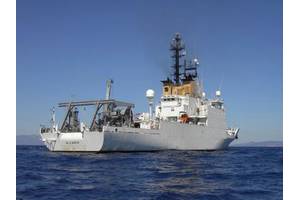
NATO RV Alliance is not just quiet, it’s ice-capable
An interview with Ian Sage, director for marine operations, NATO Center for Maritime Research and Experimentation, La Spezia, Italy.NATO’s 3,100-ton, 305-foot research vessel NRV Alliance has been a leading platform for underwater acoustics research to the benefit of NATO navies. The ship operated with a civilian crew under the German flag for many years for the NATO SACLANT Center, later renamed the NATO Undersea Research Center…
-

Interview: Dr. Catherine Warner, Director, NATO CMRE
At CMRE, it’s not just about the science. It’s about building trust and confidence in resilient systems. An interview with Dr. Catherine Warner, Director, NATO Center for Maritime Research and Experimentation, La Spezia, ItalyTell us a little about yourself and CMRE. What does CMRE do, and how do you see your mission evolving?I came here from the Pentagon, where I was the science advisor for the director of operational test and evaluation.
-
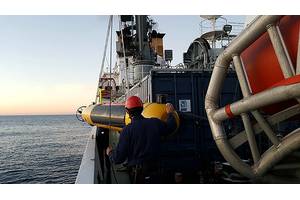
NATO employs MUSCLE Memory to Find Mines
Underwater vehicles communicate, make decisions, and work as a teamThe NATO Center for Maritime Research and Experimentation (CMRE) in La Spezia, Italy, is combining smarts and muscle to solve a complex warfighting challenge: finding and destroying mines in the murky waters of the littoral.CMRE has developed experimental unmanned vehicles for experimentation. Now it is evolving those vehicles to communicate and cooperate with each other…
-
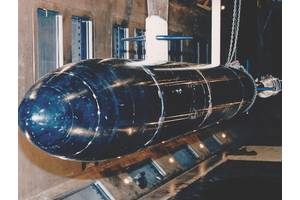
Navy Tests Scale Models in Big Facilities
Inside Naval Surface Warfare Center, Carderock DivisionThe Naval Surface Warfare Center, Carderock Division in West Bethesda, Md., is one of the world’s leading centers for surface and underwater hydrodynamic expertise, research and design, to include world-class facilities for experimentation, testing, evaluation and validation.“We build scale models of ship designs and can test these hull forms in our facilities to measure hydrodynamic load on the structure or evaluate seakeeping abilities…
-
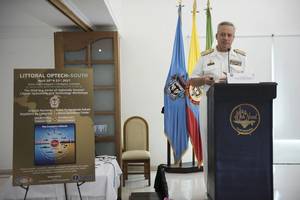
OPTECH South 2017: Littoral Challenges in Colombia
Naval experts from around the world are meeting in Cartagena, Colombia, for the Operations and Technology (OPTECH) South 2017 conference. The event is being conducted by the U.S. Naval Postgraduate School’s (NPS) Littoral Operations Center (LOC), supported by the Office of Naval Research-Global and the Colombian Naval Science and Technology Office and Swedish defense company Saab. The littoral is the complex “near shore” environment where hydrography…
-
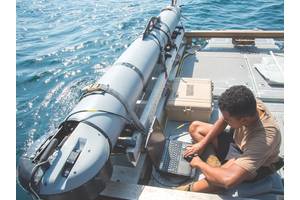
Unmanned Underwater Vehicles: Is Bigger Better?
Undersea Superiority will rely on Large Underwater Vehicles, but the question begs ... Is bigger better? The U.S. Navy has many mundane, messy and perilous underwater missions that are better performed unmanned vehicles. When considering the right vehicle for the mission, size does matter. Unmanned Underwater Vehicles (UUVs) are classified into three basic size categories: man-portable, lightweight, and large displacement based on size (as measured by displacement) and endurance.
-
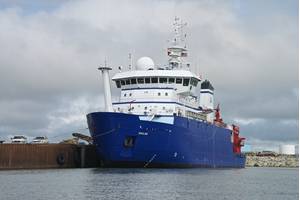
New Ships Join the US Research Fleet
The nation’s newest oceanographic research vessel, the R/V Neil Armstrong (AGOR 27), has completed acceptance trials, and the U.S. Navy turned the ship over to Woods Hole Oceanographic Institution (WHOI) on Sept. 23, which will operate the vessel as part of the U.S. Academic Research Fleet (ARF). “The U.S. Navy is proud to support the national research fleet by delivering state-of-the-art research vessels like the R/V Neil Armstrong,” said Chief of Naval Research Rear Adm.
-

Unmanned Systems Work Together from Single Controller
Unmanned air and ground systems work together from single controller in flight demo; UCS architecture enables collaboration between big and small business. A flight demonstration using a hand-held tablet has shown how unmanned air and ground vehicles can be supervised together by a single operator, and how big and small businesses can work together. The demonstration was conducted on March 26, 2014…
-
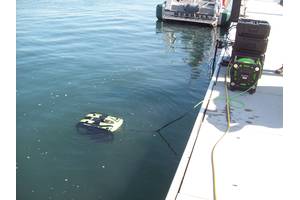
SeaBotix: Mini-ROVs Sized Just Right for a Niche Market
SeaBotix President Timm says his company makes mini-ROV systems with a pedigree of underwater expertise. “There are many areas that are either too deep or too dangerous for divers,” says Timm. “Our vehicles give the user the capability to carry a suite of sensors into these locations to inspect, survey, document, cut entanglements and retrieve objects. SeaBotix has about 70 employees, with about $21m in revenue for FY14.
-
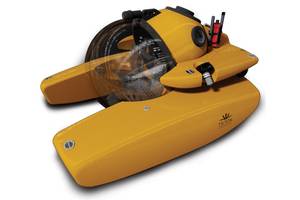
Rayotek: Seeing Under Pressure
According to Bill Raggio, Rayotek Scientific isn’t specifically a maritime company, but it definitely is part of San Diego’s “Blue Economy.” “We’re both an engineering company and a sapphire and glass manufacturer. We makes specialized glass for windows and sight windows, diffusers, pressure vessels, hydraulics and boiler systems, submarine periscopes and camera covers,” says Raggio, Rayotek’s chief technology officer.
-
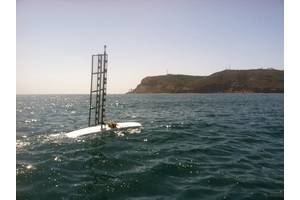
Ocean Aero All About Ocean Observation
Ocean Aero is a small, new San Diego-based unmanned maritime systems company that has big plans to provide both a product and service to solve a very difficult problem – ocean observation. “Ocean observation is being able to monitor or sense the environment above, on-top and below the surface of the water. Ocean Observation has been, until recently, largely done by manned vessels which have significant endurance and finical limitations.
-
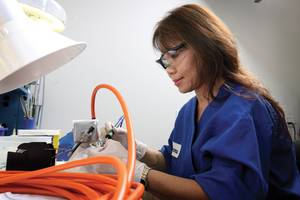
Teledyne Impulse: Making Connections in San Diego
Teledyne Impulse designs and manufactures high-reliability electrical and optical interconnection systems and connectors for a broad range of harsh environment applications. According to General Manager, Ray Hom, the company’s products are proven performers in the most demanding applications, which include oceanographic exploration, defense, oil and gas production, nuclear systems, and spacecraft and launch vehicles.
-

Scripps' San Diego Advantage
Margaret Leinen, Director, Scripps Institution of Oceanography, UC San Diego, shares her insights with MTR regarding the internationally regarded institution and it’s Southern California roots. Can you share with MTR the history of why you are located here in the San Diego area? The story of Scripps Institution of Oceanography started early in the 20th century when UC Berkeley biologist William Ritter visited San Diego and connected with the Scripps family…
-

Greg Cox on San Diego's Blue Tech Cluster
An in-depth conversation with Greg Cox, a member of the San Diego County Board of Supervisors and California Coastal Commission and a key proponent of the San Diego Blue Tech Cluster. Greg Cox has been a member of the San Diego County Board of Supervisors since 1995, where he oversees a regional government with a $5.08 billion budget and 17,000 employees. He represents the First District, which extends…
-
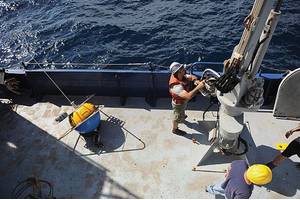
Blue Tech Economic Engine Shifts into High Gear
San Diego’s “Blue Tech” cluster is making waves. And like a high tide, the powerful “Blue Economy” is raising a lot of boats. What is the “Blue Economy?” It has been defined as the sum of all economic activity having to do with oceans, seas, harbors, ports and coastal zones. San Diego’s “Blue Economy” includes a growing cluster of maritime-related companies and organizations across 16 industry sectors including fish farming…
-
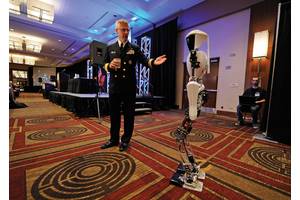
ONR and the Culture of Innovation and Invention
ONR & The Culture of Innovation and Invention: Adm. Matt Klunder, U.S. MTR sister publication Maritime Reporter & Engineering News recently had the honor to interview Rear Adm. Matt Klunder, U.S. Navy Chief of Naval Research. Here we share select responses that are pertinent to the subsea sector. What are your near term, mid-term and long term science and technology (S&T) objectives? It’s critical that our Sailors and Marines never go into a conflict as a fair fight.
-
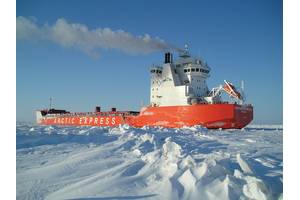
Arctic Energy Exploration Efforts Heat Up
Oil and gas—and also mining—are the drivers today propelling Arctic maritime operations and the construction of new vessels able to operate in extreme latitudes. While the gas and oil resources can be recovered in the Arctic or far north and shipped to markets by sea or pipeline, the cost of doing must be balanced upon the global market price for those commodities. Ships and marine structures able…
-
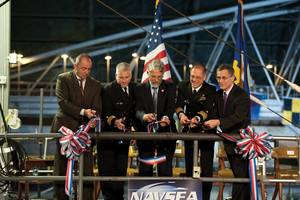
New MASK Unveiled
Before sending a new ship to sea it helps to know how well it will perform, especially in rough seas. Testing and improving the seakeeping qualities of ship designs is an art that requires a combination of computerized modeling and simulation, scale model testing in a wave making tank, and actually taking a ship to sea. The modernized Naval Surface Warfare Center’s Maneuvering and Sea Keeping (MASK) wavemaker was unveiled at a dedication ceremony on Dec.
- 1
- 2

 December 2025
December 2025



